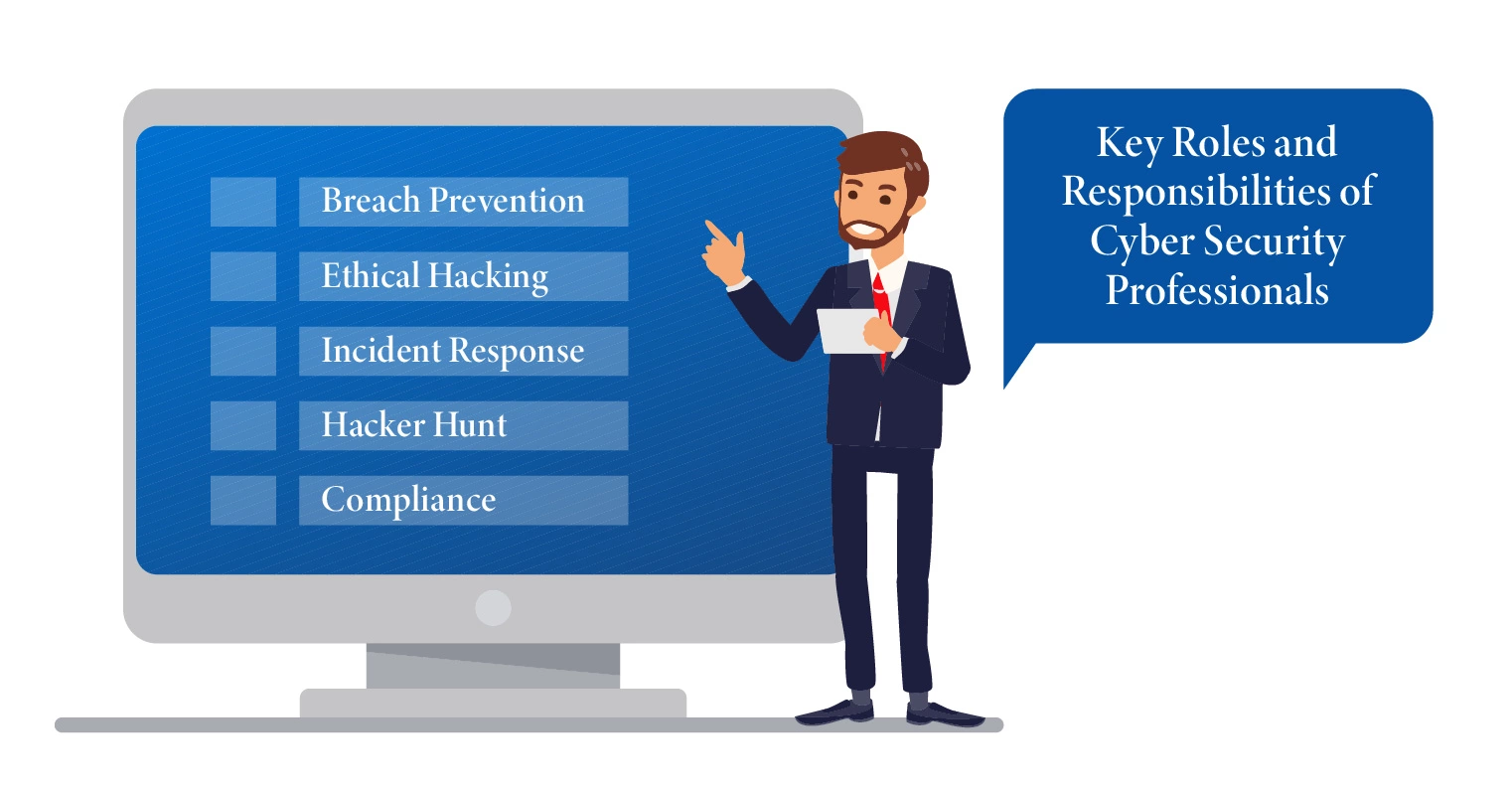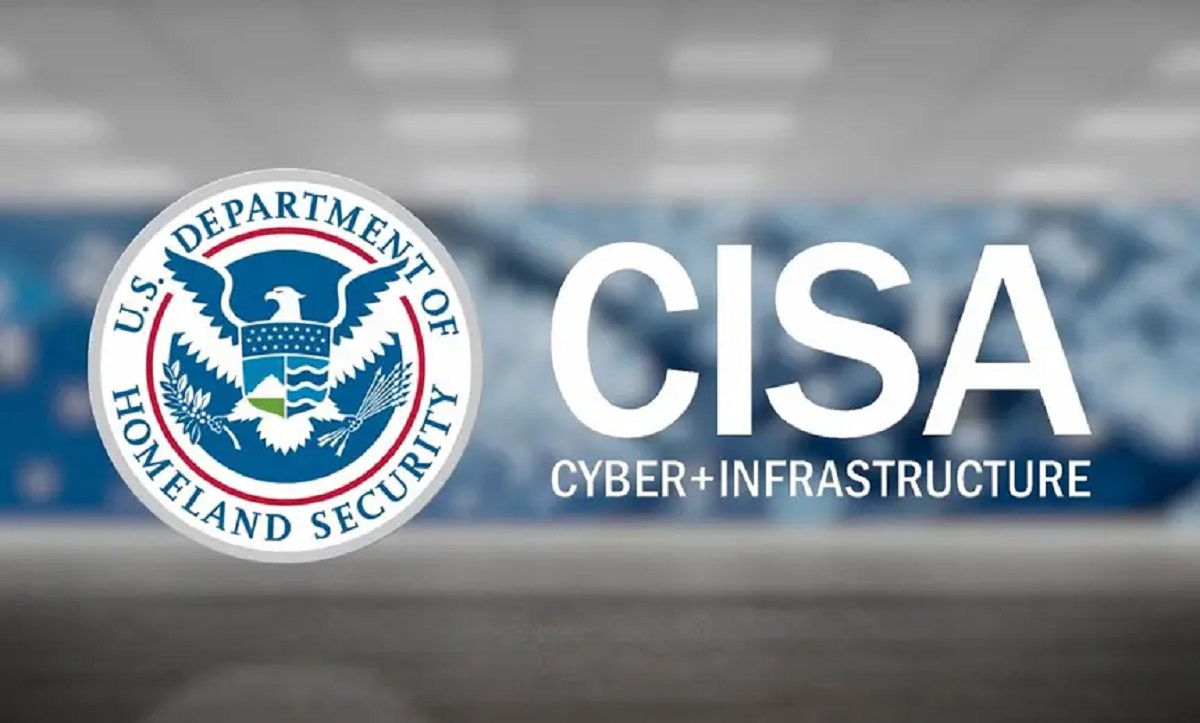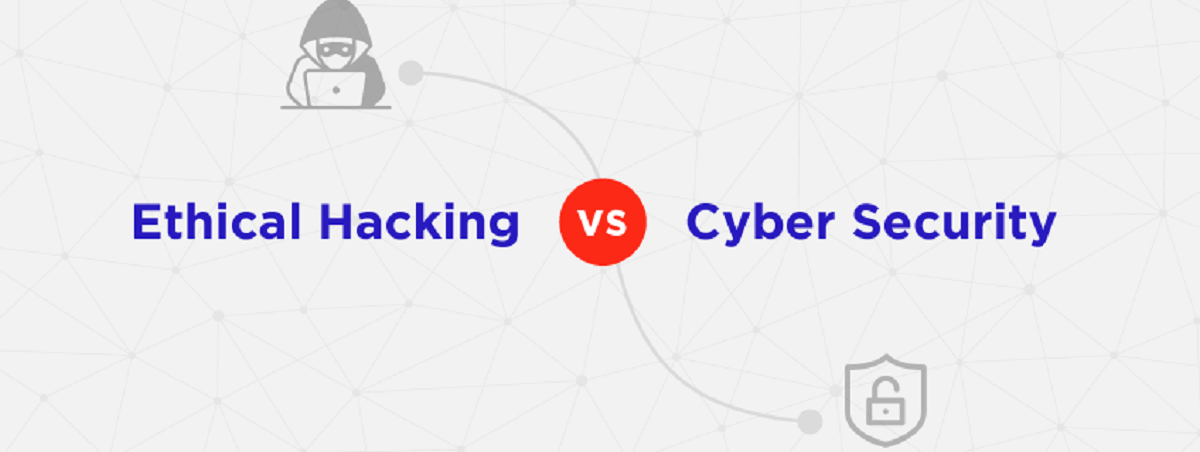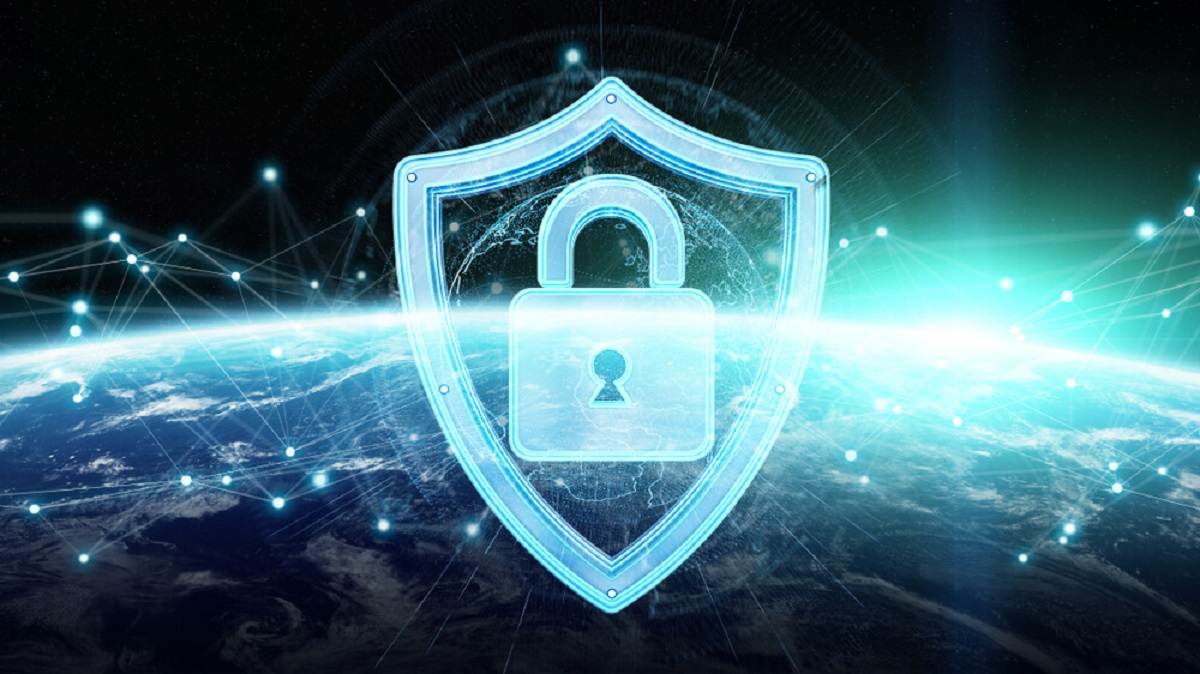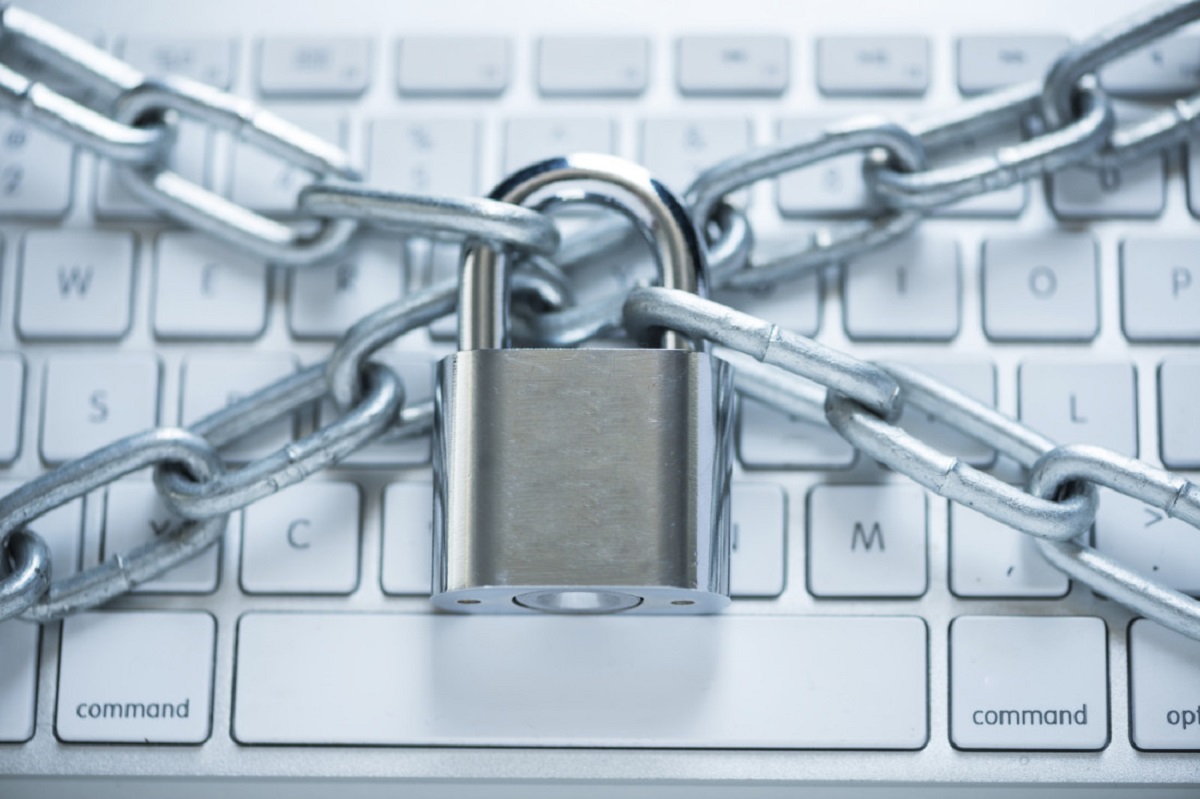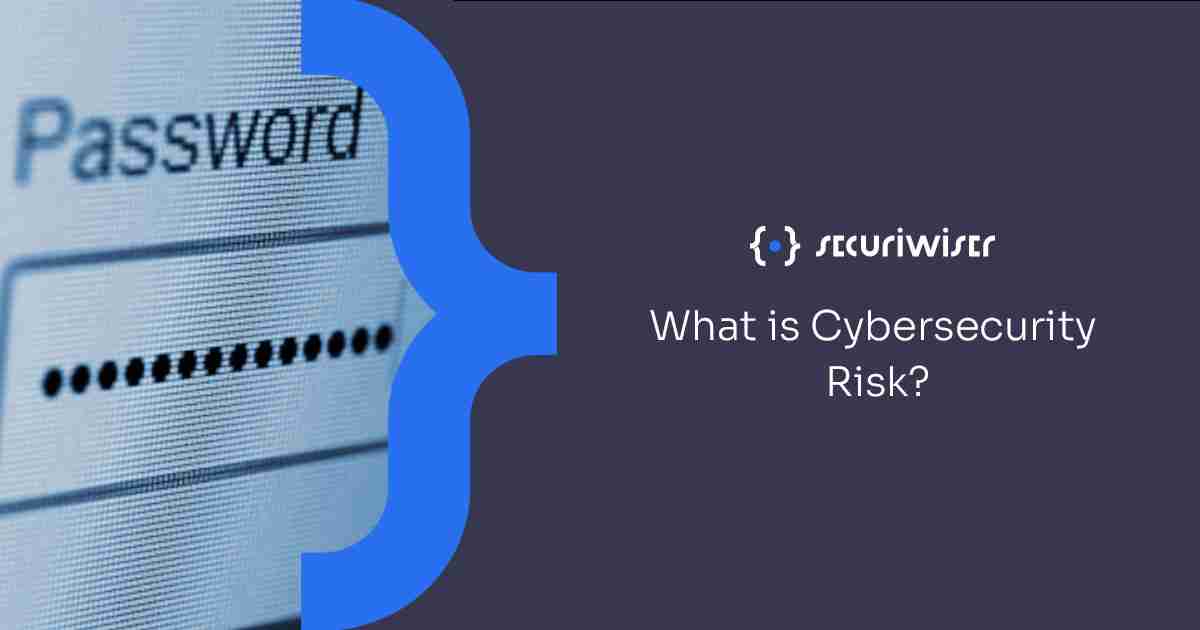Introduction
Welcome to the complex world of cybersecurity in organizations. In today’s increasingly digital landscape, ensuring the security of sensitive data and protecting against cyber threats has become a critical priority for businesses of all sizes. But who is ultimately responsible for cybersecurity?
Cybersecurity is not the sole responsibility of a single individual or department. It requires a collaborative effort from multiple stakeholders within an organization. Each stakeholder plays a unique role in safeguarding sensitive information, preventing data breaches, and mitigating cyber risks.
In this article, we will explore the various parties involved in cybersecurity and their respective responsibilities. By understanding the responsibilities of each stakeholder, organizations can create a robust cybersecurity strategy that addresses potential risks and ensures the protection of valuable assets.
To effectively manage cybersecurity, organizations must establish a culture of shared responsibility. While certain departments may have more specialized roles, it is crucial to recognize that cybersecurity is everyone’s responsibility, from the C-suite executives to front-line employees.
By fostering a collaborative and proactive approach to cybersecurity, organizations can enhance their resilience against ever-evolving cyber threats. Let us now delve deeper into the roles and responsibilities of each key stakeholder in ensuring robust cybersecurity.
The Role of Senior Management
Senior management plays a critical role in driving the cybersecurity agenda within an organization. They are responsible for setting the tone at the top and establishing a culture of security throughout the organization. Their primary responsibilities include:
- Setting cybersecurity policies and standards: Senior management is responsible for establishing comprehensive cybersecurity policies and standards that align with industry best practices and regulatory requirements. These policies should outline the organization’s approach to risk management, incident response, data protection, and employee responsibilities.
- Allocating resources: Senior management must allocate sufficient resources, including budget, personnel, and technology, to ensure the effective implementation and maintenance of cybersecurity measures. They should prioritize cybersecurity investments based on risk assessments and the organization’s overall risk appetite.
- Monitoring compliance: Senior management should regularly monitor compliance with cybersecurity policies and standards. This includes conducting internal audits, assessing vulnerabilities, and ensuring that appropriate controls are in place to mitigate risks. Any deviations from the established policies should be addressed promptly.
- Supporting cybersecurity initiatives: Senior management should actively support and promote cybersecurity awareness and training initiatives throughout the organization. By making cybersecurity education a priority, they can enhance employees’ understanding of potential risks and equip them with the necessary knowledge to mitigate and respond to cyber threats.
- Engaging with external stakeholders: Senior management should foster relationships with external stakeholders, such as regulatory bodies, industry associations, and cybersecurity experts. This enables the organization to stay informed about emerging threats, industry trends, and compliance requirements, and to collaborate with experts to enhance its cybersecurity posture.
- Leading incident response efforts: In the event of a cybersecurity incident, senior management plays a crucial role in leading the organization’s response efforts. This includes coordinating the incident response team, liaising with external parties, communicating with stakeholders, and implementing immediate corrective actions to minimize the impact of the incident.
Overall, senior management provides strategic direction and oversight for cybersecurity within an organization. Their commitment and involvement in cybersecurity initiatives are instrumental in creating a culture of security and instilling a proactive approach to addressing cyber risks throughout the organization.
The IT Department’s Responsibility
The IT department plays a crucial role in implementing and managing cybersecurity measures within an organization. They are responsible for the technical aspects of cybersecurity and ensuring the confidentiality, integrity, and availability of the organization’s information systems. The main responsibilities of the IT department include:
- Implementing robust security infrastructure: The IT department is responsible for deploying and maintaining the necessary hardware and software solutions to protect the organization’s networks, systems, and data. This includes firewalls, intrusion detection systems, antivirus software, encryption tools, and access controls.
- Conducting regular vulnerability assessments: The IT department should regularly assess the organization’s networks and systems for vulnerabilities. This involves identifying potential weaknesses, patching software vulnerabilities, and implementing security updates to protect against known threats.
- Monitoring and responding to security incidents: The IT department is responsible for monitoring the organization’s networks and systems for any signs of unauthorized access or suspicious activity. They should have incident response plans in place to detect, respond to, and mitigate security incidents in a timely manner.
- Managing user access and privileges: The IT department should establish and enforce policies and procedures for granting and managing user access to the organization’s systems and data. This includes implementing strong authentication mechanisms, role-based access controls, and regular reviews of user access rights.
- Ensuring data backup and recovery: The IT department should implement regular and secure data backup procedures to protect against data loss. They should also have contingency plans and procedures in place to recover and restore critical systems and data in the event of a cyber incident or disaster.
- Staying up to date with evolving threats: The IT department must stay informed about the latest cybersecurity threats, trends, and best practices. This includes participating in information sharing initiatives, attending industry conferences, and engaging with cybersecurity communities to enhance their knowledge and expertise.
By fulfilling these responsibilities, the IT department plays a vital role in maintaining the organization’s cyber resilience. They are the frontline defenders, continually working to prevent, detect, and respond to cyber threats and ensuring the smooth operation of the organization’s information systems.
The Human Resources Department’s Role
The Human Resources (HR) department is more than just hiring and managing employees. In the context of cybersecurity, HR plays a crucial role in creating a security-conscious workforce and ensuring that employees adhere to cybersecurity policies and best practices. The main responsibilities of the HR department in relation to cybersecurity include:
- Developing and enforcing cybersecurity policies: The HR department collaborates with senior management and IT to develop comprehensive cybersecurity policies and procedures. They ensure that these policies are communicated effectively to all employees and are regularly updated to address emerging threats. HR should also enforce the policies and apply appropriate consequences for violations.
- Conducting employee screenings: HR should have a robust employee screening process in place, including background checks and reference checks, to mitigate the risks of insider threats. This helps ensure that individuals with a higher risk of compromising cybersecurity are not given access to sensitive systems and data.
- Delivering cybersecurity awareness training: HR plays a pivotal role in organizing and delivering cybersecurity awareness training programs to educate employees about the importance of cybersecurity and the potential risks they may face. This includes training on how to identify and report phishing emails, how to create strong passwords, and other best practices for cybersecurity.
- Implementing a culture of security: HR can foster a culture of security by integrating cybersecurity into the organization’s values and ensuring it is part of ongoing employee communication and engagement initiatives. This includes promoting a “security-first” mindset and recognizing and rewarding employees who demonstrate exemplary cybersecurity practices.
- Managing employee offboarding: When employees leave the organization, HR ensures that their access to systems and data is promptly revoked. This includes deactivating accounts, retrieving company-owned devices, and updating HR records to reflect the change in employment status. This helps prevent unauthorized access by former employees.
- Handling cybersecurity incidents involving employees: HR collaborates with the IT department and senior management to handle cybersecurity incidents involving employees. This includes investigating incidents, documenting and reporting findings, and taking appropriate disciplinary actions if necessary.
By fulfilling these responsibilities, the HR department contributes to creating a cybersecurity-aware workforce and helps mitigate human-related risks. They play a critical role in ensuring that employees understand their role in protecting the organization’s valuable assets and are equipped with the knowledge and skills necessary to maintain a strong cybersecurity posture.
The Importance of Employee Training and Awareness
Employees are often the weakest link in an organization’s cybersecurity defense. This is why providing comprehensive cybersecurity training and fostering awareness among employees is crucial. Training and awareness initiatives help employees understand the risks they face and empower them to actively contribute to maintaining a secure environment. The importance of employee training and awareness includes:
- Recognizing and mitigating phishing attacks: Phishing attacks are one of the most common methods used by cybercriminals to gain unauthorized access to systems and data. Training employees to identify and report suspicious emails and websites can significantly reduce the risk of falling victim to these attacks.
- Applying strong password practices: Weak passwords are easy targets for hackers. Educating employees about the importance of creating strong and unique passwords, implementing multi-factor authentication, and regularly updating their passwords are essential for enhancing the organization’s overall security posture.
- Understanding potential social engineering tactics: Social engineering techniques, such as pretexting and baiting, exploit people’s trust to gain unauthorized access. By educating employees about these tactics and encouraging skepticism and caution, organizations can minimize the risk of unwittingly providing sensitive information to attackers.
- Protecting sensitive data: Employees need to understand the value of the data they handle and the need to safeguard it. Training can emphasize the importance of confidentiality, proper data handling procedures, and the potential consequences of data breaches. This helps employees establish a sense of responsibility and accountability when working with sensitive information.
- Securing mobile and remote work: With the increasing prevalence of remote work and the use of mobile devices, training employees on the best practices for securing their devices, connecting to secure networks, and using virtual private networks (VPNs) helps protect against potential data breaches and unauthorized access.
- Reporting incidents and suspicious activities: Employees should be aware of the importance of promptly reporting any cybersecurity incidents or suspicious activities they come across. This enables the organization’s incident response team to take immediate action and minimize the impact of an attack.
- Creating a security-first culture: Ultimately, training and awareness initiatives contribute to establishing a security-first culture within the organization. By empowering employees with the knowledge and skills to protect against cyber threats, organizations can establish a collective mindset where cybersecurity is seen as everyone’s responsibility.
Regular and ongoing cybersecurity training programs, combined with awareness campaigns and reminders, can significantly improve an organization’s overall security posture. By investing in employee training and fostering a culture of security, organizations can reduce the human factor as a vulnerability and strengthen their defense against evolving cyber threats.
The Role of Employees
Employees are an integral part of an organization’s cybersecurity defense. While there are dedicated teams and technologies to protect against cyber threats, employees play a critical role in maintaining a strong security posture. Their responsibilities in cybersecurity include:
- Following cybersecurity policies and procedures: Employees should familiarize themselves with the organization’s cybersecurity policies and procedures and adhere to them diligently. This includes using strong and unique passwords, being cautious of phishing attempts, and reporting any suspicious activities.
- Practicing good password hygiene: Employees should create strong passwords and regularly update them. They should not use the same password for multiple accounts and avoid sharing passwords with others. By following good password hygiene practices, employees can help prevent unauthorized access to their accounts and the organization’s systems.
- Being vigilant against phishing attacks: Phishing attacks are a common method used by cybercriminals to trick employees into revealing sensitive information. Employees should be cautious of suspicious emails, links, and attachments. By being vigilant and reporting potential phishing attempts, employees can protect themselves and the organization.
- Protecting company assets: Employees need to understand the value of the organization’s assets, including sensitive data and intellectual property. They should handle and protect these assets according to established policies and procedures. This includes securing physical documents, properly disposing of confidential information, and encrypting sensitive data when transmitting it electronically.
- Keeping software and devices up to date: Employees should regularly update their software, applications, and devices to ensure they have the latest security patches. By keeping their technology up to date, employees can protect themselves and the organization from known vulnerabilities and potential exploits.
- Reporting incidents and suspicious activities: Employees should promptly report any cybersecurity incidents or suspicious activities they encounter. This includes unusual system behavior, unauthorized access attempts, or lost devices. By reporting these incidents, employees enable the organization’s incident response team to take swift action and mitigate any potential threats.
- Participating in cybersecurity training and awareness initiatives: Employees should actively engage in cybersecurity training and awareness programs provided by the organization. By staying informed about the latest threats and best practices, employees can better protect themselves and the organization against cyber risks.
Employees are the first line of defense in protecting an organization’s systems and data. By being vigilant, following established procedures, and actively participating in cybersecurity efforts, employees can significantly mitigate the risk of cyber threats and contribute to a strong cybersecurity posture within the organization.
The Role of Third-Party Vendors
In today’s interconnected business landscape, organizations often rely on third-party vendors to provide various products and services. These vendors can range from cloud service providers to software developers and from payment processors to supply chain partners. While leveraging the expertise and capabilities of external vendors can bring numerous benefits, it also introduces potential cybersecurity risks. The role of third-party vendors in maintaining cybersecurity includes:
- Vendor risk assessment: Organizations should conduct thorough assessments of potential vendors’ cybersecurity practices before entering into partnerships or agreements. This includes evaluating their security controls, incident response plans, and data protection measures. These assessments help ensure that vendors can meet the organization’s cybersecurity expectations and protect sensitive data.
- Contractual obligations: Organizations should establish clear and comprehensive cybersecurity requirements in contracts with vendors. These obligations may include data handling and protection requirements, incident notification protocols, and regular security audits. By clearly articulating cybersecurity expectations, organizations can hold vendors accountable for maintaining a secure environment.
- Security due diligence: Organizations should regularly monitor and assess the cybersecurity practices of their vendors throughout the duration of the relationship. This includes conducting vendor audits, reviewing security reports, and monitoring compliance with agreed-upon security controls. Regular assessments help ensure that vendors continue to uphold security standards.
- Secure data sharing: When sharing sensitive data with third-party vendors, organizations should implement secure methods and protocols. This may involve encryption, secure file transfer protocols, and access controls. By implementing proper data sharing practices, organizations mitigate the risk of data breaches and unauthorized access.
- Contingency planning: Organizations should work with vendors to establish contingency plans in the event of a cybersecurity incident. This includes establishing incident response procedures, specifying communication channels, and determining responsibilities. Collaborative planning helps minimize disruptions and ensures a coordinated response to incidents.
- Ongoing communication and collaboration: Maintaining open lines of communication with vendors is crucial for effective cybersecurity management. Regular dialogue allows organizations to stay informed about any changes or updates that may impact security and address any concerns promptly. Collaboration also fosters a shared responsibility for maintaining a secure environment.
While organizations can implement robust cybersecurity measures internally, the security of their systems and data can still be compromised by vulnerabilities introduced through third-party vendors. By actively managing vendor relationships, implementing clear security requirements, and maintaining ongoing monitoring and communication, organizations can better protect themselves from potential vendor-related cybersecurity risks.
The Legal and Compliance Department’s Responsibility
The Legal and Compliance department plays a crucial role in ensuring that an organization’s cybersecurity practices comply with applicable laws, regulations, and industry standards. They are responsible for mitigating legal risks and maintaining regulatory compliance. The main responsibilities of the Legal and Compliance department in relation to cybersecurity include:
- Understanding legal and regulatory requirements: The Legal and Compliance department is responsible for staying up to date with relevant laws and regulations pertaining to cybersecurity. This includes data protection regulations, privacy laws, industry-specific requirements, and international standards. They must ensure that the organization’s cybersecurity practices align with these requirements.
- Developing and implementing policies and procedures: The Legal and Compliance department works with other stakeholders, such as IT and HR, to develop comprehensive cybersecurity policies and procedures. These policies ensure that the organization operates within legal boundaries and meets the necessary compliance requirements. They address areas such as data privacy, incident response, and employee responsibilities.
- Managing data breach response and notification: In the event of a data breach, the Legal and Compliance department leads the organization’s response efforts in compliance with legal requirements. This includes conducting internal investigations to determine the cause and extent of the breach, assessing legal and reputational risks, and notifying affected individuals, regulators, and other stakeholders as required by law.
- Collaborating with external regulatory bodies: The Legal and Compliance department serves as the point of contact for external regulatory bodies and authorities regarding cybersecurity matters. They liaise with regulators, respond to inquiries, and participate in audits or investigations to demonstrate the organization’s compliance with relevant regulations.
- Conducting internal audits and assessments: The Legal and Compliance department collaborates with other stakeholders to conduct regular internal cybersecurity audits and assessments. This helps identify any compliance gaps or potential legal risks. They can then recommend and implement remediation measures to ensure ongoing compliance.
- Providing legal guidance and advice: The Legal and Compliance department provides legal counsel and guidance on cybersecurity-related matters. They offer advice on contract negotiations with vendors, manage legal disputes related to cybersecurity incidents, and educate employees about legal obligations and implications of cybersecurity practices.
- Maintaining records and documentation: The Legal and Compliance department ensures proper documentation and record-keeping for cybersecurity-related activities. This includes maintaining records of policies, procedures, incident response plans, training programs, legal agreements, and compliance assessments. These records serve as evidence of the organization’s commitment to cybersecurity and compliance.
By fulfilling these responsibilities, the Legal and Compliance department helps ensure that the organization’s cybersecurity practices align with legal requirements and industry standards. Their expertise in navigating legal and regulatory landscapes is instrumental in mitigating legal risks and maintaining a proactive approach to cybersecurity compliance.
The Role of the Chief Information Security Officer (CISO)
The Chief Information Security Officer (CISO) is a senior-level executive responsible for establishing and maintaining an organization’s cybersecurity strategy. As the leader of the cybersecurity function, the CISO plays a critical role in protecting the organization’s sensitive data, managing cyber risks, and ensuring compliance. The main responsibilities of the CISO include:
- Developing and implementing cybersecurity strategy: The CISO is responsible for developing a comprehensive cybersecurity strategy that aligns with the organization’s goals and risk appetite. They assess the organization’s cyber risks, identify security gaps, and develop strategies to mitigate threats and vulnerabilities.
- Leading the cybersecurity team: The CISO oversees the cybersecurity team and provides leadership, guidance, and support. They ensure that the team has the necessary resources, skills, and tools to effectively safeguard the organization’s systems and data. The CISO also fosters a culture of continuous improvement and fosters professional development within the team.
- Managing cybersecurity operations: The CISO is responsible for managing day-to-day cybersecurity operations. This includes overseeing vulnerability assessments, analyzing security incidents, implementing security controls, and monitoring the effectiveness of security measures. The CISO also coordinates incident response efforts to minimize the impact of cyber incidents.
- Establishing policies and procedures: The CISO develops and implements cybersecurity policies and procedures to guide the organization’s security practices. These policies address areas such as access controls, data protection, incident response, third-party vendor management, and employee training. The CISO ensures that these policies are communicated and enforced throughout the organization.
- Collaborating with stakeholders: The CISO works closely with senior management, IT, Legal and Compliance, HR, and other departments to align cybersecurity initiatives with organizational priorities. They collaborate with these stakeholders to address cybersecurity risks, ensure compliance with legal and regulatory requirements, and establish a culture of security throughout the organization.
- Staying informed about emerging threats and technologies: The CISO keeps abreast of the evolving cybersecurity landscape, including emerging threats, industry trends, and technological advancements. They participate in industry forums, engage with cybersecurity communities, and continuously educate themselves to enhance their knowledge and expertise.
- Communicating with executives and the board: The CISO communicates the organization’s cybersecurity strategy, initiatives, and risks to the executive leadership team and the board of directors. They provide regular updates on the organization’s security posture, incident response activities, and ongoing compliance efforts. Their insights and recommendations help inform strategic decision-making.
The CISO plays a pivotal role in ensuring the organization’s cybersecurity resilience. By developing and implementing a robust cybersecurity strategy, managing cybersecurity operations, and collaborating with stakeholders, the CISO helps safeguard the organization’s systems, data, and reputation in an increasingly challenging cyber landscape.
Collaboration and Communication Among Departments
Effective collaboration and communication among departments is crucial for a strong cybersecurity posture within an organization. Cybersecurity cannot be the responsibility of a single department; it requires a collective effort and shared responsibility. The key benefits of collaboration and communication among departments in cybersecurity include:
- Shared understanding of cybersecurity risks: Collaboration allows different departments to come together and gain a comprehensive understanding of the organization’s cybersecurity risks and challenges. By sharing knowledge and insights, departments can develop a unified perspective on potential threats and vulnerabilities.
- Alignment of cybersecurity strategies: When departments collaborate, they can ensure that their cybersecurity strategies are aligned with the organization’s overall goals and objectives. This alignment helps avoid siloed approaches and creates a unified front to address cyber risks effectively.
- Proactive risk management: Collaboration enables proactive risk management by identifying potential vulnerabilities and developing strategies to mitigate them. By pooling resources and expertise, departments can identify emerging threats, implement appropriate controls, and share best practices to strengthen the organization’s cyber defenses.
- Effective incident response: In the event of a cybersecurity incident, effective communication and collaboration among departments are critical. Prompt and coordinated incident response efforts can help minimize the impact of an incident, ensure the timely resolution of issues, and enable a swift return to normal operations.
- Development of comprehensive policies and procedures: Collaboration among departments ensures that policies and procedures are developed collectively, drawing on the unique perspectives and expertise of each department. This collaborative approach helps create more comprehensive and robust cybersecurity policies that address the specific needs and requirements of the organization.
- Enhanced employee awareness and training: Collaboration facilitates the development and delivery of cybersecurity awareness and training programs. By pooling resources and expertise, departments can create engaging and relevant training materials that educate employees about their role in maintaining a secure environment and equip them with the necessary skills and knowledge to protect against cyber threats.
- Effective vendor management: Collaboration among departments is vital when engaging with third-party vendors. Departments such as IT, Legal and Compliance, and Procurement can work together to ensure that vendors meet the organization’s cybersecurity requirements and undergo the necessary assessments to mitigate vendor-related risks.
- Continual improvement: Collaboration and communication foster a culture of continuous improvement in cybersecurity. By conducting regular meetings, sharing insights and lessons learned, and assessing the effectiveness of cybersecurity initiatives, departments can identify areas for improvement and implement measures to strengthen the organization’s cyber resilience.
Collaboration and communication among departments are essential in addressing the complex and evolving challenges of cybersecurity. By working together, departments can leverage their collective knowledge, skills, and resources to develop a well-coordinated and proactive approach that enhances the organization’s cybersecurity posture.
Conclusion
Cybersecurity in organizations requires a collaborative and multifaceted approach. No single department or individual can bear the sole responsibility for protecting sensitive data and mitigating cyber risks. It is a collective effort that involves senior management, the IT department, the Human Resources department, employees, third-party vendors, the Legal and Compliance department, the CISO, and effective collaboration and communication among all these stakeholders.
Senior management sets the tone at the top and establishes a culture of security within the organization. The IT department implements technical safeguards, conducts vulnerability assessments, and manages security incidents. The Human Resources department plays a crucial role in employee training and awareness to ensure a security-conscious workforce. Employees themselves have the responsibility to follow cybersecurity policies, report incidents, and contribute to the organization’s security efforts. Third-party vendors should be carefully selected, assessed, and managed to minimize cybersecurity risks. The Legal and Compliance department ensures legal and regulatory compliance, manages incident response, and fosters a culture of security.
The Chief Information Security Officer (CISO) provides strategic leadership, manages cybersecurity operations, and ensures the organization’s cybersecurity programs align with its goals and risk appetite. Collaboration and communication among departments foster shared understanding, proactive risk management, effective incident response, and the development of comprehensive cybersecurity policies and procedures. By collaborating and sharing knowledge, departments can enhance employee awareness and training, manage vendors effectively, and continuously improve their cybersecurity practices.
Ultimately, cybersecurity is an ongoing process that requires continuous learning, adaptation, and coordination among various stakeholders. Organizations must prioritize cybersecurity and invest in the necessary resources, technology, and training to maintain a strong security posture. By fostering a collective responsibility for cybersecurity and recognizing its importance at all levels of the organization, businesses can better protect themselves, their data, and their stakeholders against the ever-evolving threats in today’s digital landscape.







